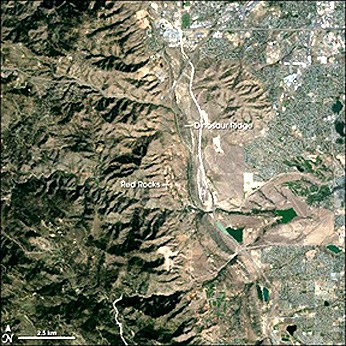Contributed by Andy Stahl
In comments on K.I.S.S. (Part 1, I now realize), John Rupe suggests that NFMA requires that forest plans be an “umbrella document” to guide all national forest activities. There are three reasons for thinking that’s not the case. First, the existing plethora of non-NFMA forest-wide plans argues that the Forest Service has never acted as if NFMA plans are all-encompassing. These include separate plans for roads and trails (“Access and Travel Management Plans”), fire suppression and use (“Fire Management Plans”), and recreation infrastructure (“Recreation Facilities Analysis”). None of these forest-wide plans is a part of the NFMA planning process or that law’s planning regulations.
Second, NFMA is most parsimoniously read as I suggested in K.I.S.S. Part 1. The “one integrated plan” language Rupe cites requires only that plans include “all of the features required by this section.” As I noted previously, the only mandatory feature NFMA requires of its plans is “forest management systems, harvesting levels, and procedures.” What makes NFMA revolutionary, for its day, is that NFMA plans must make timbering decisions “in light of” the multiple uses. That means the Forest Service must demonstrate that logging decisions are not made in a vacuum as if other natural resources don’t exist. Thus, for example, NFMA requires an interdisciplinary team prepare the plan and that the plan be based on inventories of “applicable resources,” e.g., fish and wildlife.
NFMA further emphasizes that logging’s environmental consequences are important by its reference to the National Environmental Policy Act. 16 U.S.C. 1604(g)(1). But disclosing the environmental consequences of timbering decisions is not the same as comprehensively planning the future of all natural resource activities on a national forest in a single plan. NFMA requires the first; it does not the second.
Third, NFMA’s legislative history shows that Congress was 100% preoccupied with curing the real and perceived sins of over-logging the national forests. Beginning with the 1970 Bolle Report that criticized clearcutting and terracing on the Bitterroot National Forest, the 1971 hearings on clearcutting held by Senator Frank Church (the recommendations of which were adopted almost verbatim in NFMA), and culminating in the spirited debate between Senator Randolph (who favored a bill that would have banned clearcutting outright) and Senator Humphrey (who favored a planning process), it is clear that Congress cared about how logging was regulated on national forests. Nothing about mining, grazing, ski area development, water use, campgrounds, utility corridors, recreation cabins, or any other national forest use, except insofar as it is harmed by logging, can be found in the Act’s extensive legislative history.
Far from a call for all-resource, comprehensive planning, Senator Humphrey believed the Act’s purpose was to “get the practice of forestry out of the courts and back in the forests.” He wanted foresters to stop seeing forests “only as trees and trees viewed only as timber.” Humphrey wanted “the soil and water, the grasses and the shrubs, the fish and the wildlife and the beauty that is the forest” to be integrated into “resource managers’ thinking and actions.” That is, their “thinking and actions” about silviculture and logging.


